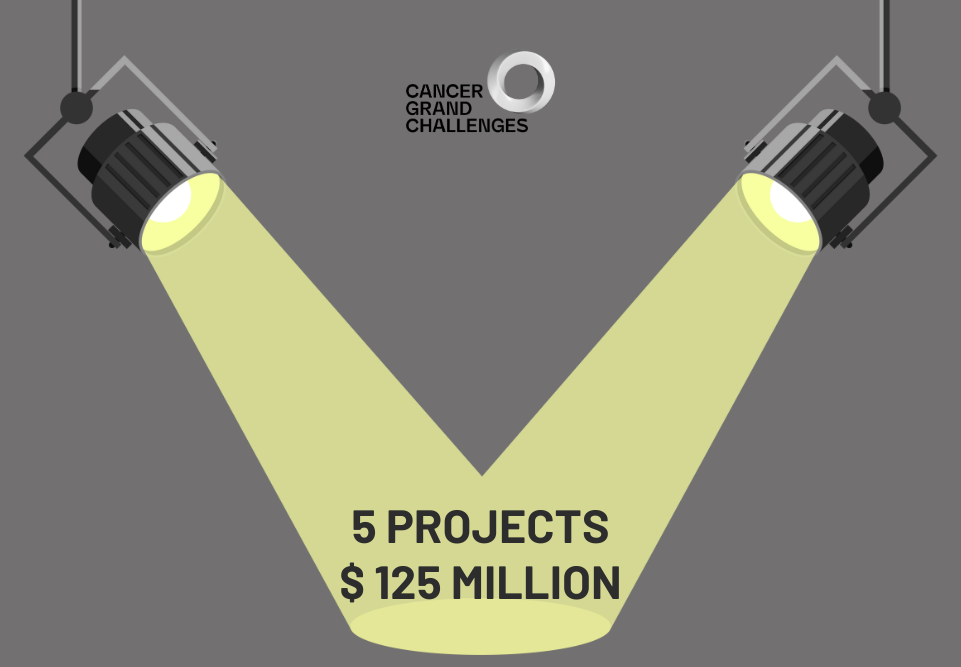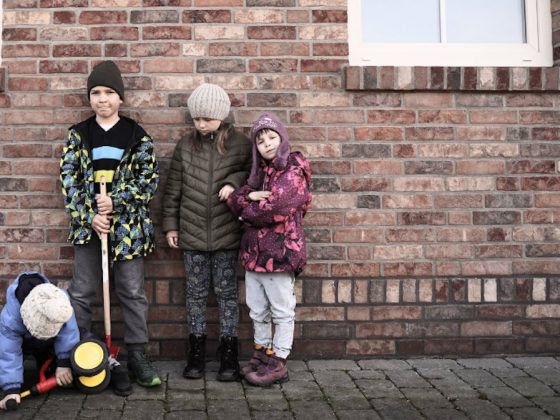The Cancer Grand Challenges initiative has announced the five global research teams who between them will receive $125 million to address unanswered questions. The winning teams, revealed in March, are addressing four major oncology challenges – solid tumours in children, T-cell receptors, early onset cancers, and cancer inequalities.
“Some of these challenge areas have been massively under-investigated. Now it’s time for the teams addressing these challenges to shine and bring the full power of the global team science to bear on the work that lies ahead,” says David Lane, chair of the Cancer Grand Challenges Scientific Committee.
Initially launched as CRUK Cancer Grand Challenge by Cancer Research UK in 2015, the name was changed in 2020 to Cancer Grand Challenges when the National Cancer Institute in the US came on board. Alongside the foundational partners, the current awards (representing the fourth round since 2015) had funding support from the Scientific Foundation of the Spanish Association Against Cancer, the Bowelbabe Fund for Cancer Research UK, the French Institut National du Cancer (INCa), the Dutch Cancer Society, the international Mark Foundation for Cancer Research and the Dutch KiKa (Children Cancer-Free Foundation).
“These challenges cannot be solved by a single researcher, institution or country alone, which is why Cancer Grand Challenges takes an international large-scale funding approach. With awards of up to 25 million, teams can rise above the traditional boundaries of geography and discipline to make vital progress against cancer,” explains David Scott, director of Cancer Grand Challenges.
The funding cycle for Cancer Grand Challenges runs over two years. First the international scientific committee of 15 experts and the patient advocacy panel of 12 advocates submit ideas for new challenges. For the latest funding round in March 2023, the initiative selected nine new challenges: T-cell receptors; obesity, physical activity, and cancer; early-onset cancers; cancer cell plasticity; cancer inequalities; retrotransposable elements; solid tumours in children; ageing and cancer; and chemotherapy-induced neurotoxicities. The five winners were chosen after an extensive competitive process, which involved reviewing applications from 176 global teams. The winners join a global community, currently standing at more than 1,200 investigators and collaborators across 92 research institutions in 16 countries, who have received total overall funding of more than $400 million.
“The beauty of the Cancer Grand Challenges is that they enable us to address really ambitious questions that have relevance to human health and to helping patients with cancer,” said Charles Swanton, a member of the Cancer Grand Challenges Scientific Committee, in the latest edition of the Discover magazine.
The four challenges being addressed in the winning projects are:
Solid tumours in children
KOODAC, led by Yaël Mossé (Children’s Hospital of Philadelphia) and Martin Eilers (University of Würzburg), will use protein degradation technology to target oncoproteins driving high risk paediatric solid tumours. The project, which will run at 10 institutions across five countries, involves structural biology, chemical biology, paediatric oncology, and medicinal chemistry.
Although the major genetic drivers of childhood cancers have been identified, the oncoproteins encoded by these genes have been considered largely undruggable.
The team plan to take five key oncoproteins (ALK, DNAJB1::PRKACA, MYCN, EWSR1::FLI1 and PAX3::FOX01 [or PAX7::FOX01]) from undruggable to ‘degradable’, with a new generation of targeted protein degraders that aim to get around problems inhibiting the target proteins by degrading them instead. The oncoproteins have been selected because they are implicated in the development and/or spread of neuroblastoma, fibrolamellar hepatocellular carcinoma, medulloblastoma, Ewings sarcoma and rhabdomyosarcoma. The degrading approaches being considered are proteolysis targeting chimeras and molecular glue degraders, with a goal that the agents will cross the blood–brain barrier.
For any promising drugs that emerge, KOODAC plan to conduct preclinical studies to enable biomarker-driven clinical trials after the programme is completed.
“The Cancer Grand Challenges approach has enabled us to bring together people with very different scientific backgrounds and divergent technological know-how to focus on one overarching question. We feel the responsibility and urgency to bring better therapies to children with cancer,” says Mossé.
PROTECT, led by Stefan Pfister (Hopp Children’s Cancer Centre, Heidelberg), plans to establish a platform to develop and test drugs targeting undrugged drivers of childhood solid tumours. The project, which will run at 10 institutions across five countries, involves paediatric oncology, targeted protein degradation, high-throughput chemical screening, medicinal chemistry, structural biology, tumour biology, preclinical drug testing, and clinical trials.
The team plan to focus on a variety of targets at different levels of development in Ewings sarcoma, neuroblastoma, synovial cell sarcoma, high grade glioma ependymoma, and gastrointestinal stomal tumours. For targets without existing drug candidates, they will dissect their chemical structure and apply ligand discovery, fragment-based screening, and optimisation approaches to identify drug candidates. For targets with drug candidates the team will use in vivo models to assess dosing, scheduling, and toxicity, as well as combinations.
As well as finding new drugs, the team is looking to find ways of making CAR T-cell therapy more effective. They plan to deploy targeted protein degradation approaches as an ‘on’ or ‘off’ switch to regulate the activity of CAR-T cells, which can become ‘exhausted’, leading to impairment of cancer killing capacity.
Working with industry partners, the team will aim to move the most promising drugs into early-stage clinical trials. “This academic team approach to drug discovery for paediatric-specific therapies will be essential to increase cure rates for some of the most challenging cancers in children and decrease lifelong sequalae,” says Pfister.
T-cell receptors
MATCHMAKERS, led by Michael Birnbaum (Massachusetts Institute of Technology, Cambridge, Massachusetts), will integrate high-throughput technology and computational prediction to understand how T cells recognise tumours. The project, which will run across 10 institutions in five countries, involves cancer immunology, computer science, high-throughput method development and structural biology.
The molecular diversity of T-cell receptors (TCRs) has made it difficult to understand how T cells interact with major histocompatibility complexes (antigens presented by protein complexes on the surface of cancer cells).
The team will develop high-throughput approaches matching TCRs to the antigen they recognise, generating a dataset of thousands of pairs. They will also generate synthetic antibodies and TCRs in the lab to create new pairs. Using structural and biochemical analyses, they plan to explore 3D structures to understand how the two proteins physically interact.
Data will then be used to train computer algorithms to predict antigens recognised by different TCRs and to design new TCRs for use in immunotherapies.
“Our team has the combination of immunologists, computer scientists and engineers needed to create the technologies to make it possible to predict what a T cell recognises, which will enable the development of patient-specific TCR immunotherapies,” says Birnbaum.
Early onset cancer
PROSPECT, led by Yin Cao (Washington University in St Louis, Missouri) and Andrew Chan (Massachusetts General Hospital, Boston), aims to uncover mechanisms linking lifetime exposures to early-onset colorectal cancer (EOCRC). The project, which will run at nine institutions in five countries, involves biochemistry, cancer biology, clinical and global oncology, computational biology, epidemiology, epigenomics, gastroenterology, immunology, microbiome, nutrition, and pathology.
In recent years the number of colorectal cancer cases in people under the age of 50 has risen. The team aim to understand the pathways, risk factors, and molecules involved in EOCRC.
In diverse human cohorts encompassing 2,700 EOCRC cases, the team will explore exposures to known risk factors (such as obesity and poor diet), novel risk factors, and features of the microbiome that could contribute. Using animal and in vitro organoid models, they will study how the identified risk factors cause biological changes increasing EOCRC susceptibility. Finally, the team plan to undertake two types of trials. The first will take a precision intervention approach, exploring whether treating young adults with an increased risk of EOCRC with anti-obesity drugs or dietary intervention interferes with molecular pathways. The second is a community risk assessment trial to determine whether knowing EOCRC risk influences people’s motivation to adapt lifestyle or undergo screening.
“The alarming rise of colorectal cancer in young people around the world demands immediate action. Only by pushing the boundaries of our individual fields can we move quickly to identify opportunities for preventive interventions that can benefit younger generations,” says Chan.
Cancer inequalities
SAMBAI, led by Melissa Davis (Morehouse School of Medicine, Atlanta, Georgia), will generate a database with measurement of social, environmental, genetic, and immunological factors that cause and influence disparate cancer outcomes in underserved populations of African descent. The project, which will run at 15 institutions across four countries, involves computational biology, epidemiology, exposomics, genomics, and immunology.
The team will focus on breast, pancreatic, and prostate cancers – three cancer types known to have a disproportionately higher rate of aggressive tumour grade and early onset in Black people. First, using qualitative and quantitative metrics, they will collect data on social determinants of health, including individual and lifestyle behaviours, social-cultural experiences, characteristics of the immediate environment, and structural-political determinants. Second, using mass spectrometry, the team will collect data on thousands of exogenous and endogenous molecules to identify risk factors relevant to these populations. Using whole-genome and RNA sequencing, they will map genetic diversity and look at epigenetics to determine whether external exposures have imprinted on germlines and tumour genomes. Finally, they will look at immune cells and inflammatory proteins present within the circulation and tumours of patients from the SAMBAI cohort to determine whether they have elevated levels of systemic inflammation. The findings, they hope, will inform policies and generate opportunities for interventions specific to these populations.
“Our work will be a catalyst for exponential change. In partnership with patients, the resources we will create can galvanise the work of many other groups. We will reposition important research questions in a better scope, with comprehensive data, that represents a global context,” says Davis.












